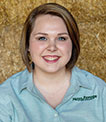
Fall is a busy time of year for most farmers, but it is also an important time to pay close attention to your forage enterprise. Marc Sulc, Ohio State University Extension forage specialist, recently provided 10 fall forage management tips in the C.O.R.N. newsletter. Here is his list:
• Pull soil samples and get a soil test. Apply fertilizer to correct any soil deficiencies and replace nutrients that were removed in hay and silage. “Fall is a great time to apply both phosphorus and potassium to prepare established forage stands for winter,” Sulc said. Soil preparation now will also help you be ready to plant when the first break in the weather comes next spring.
• Scout hayfields and pastures for current and emerging weed problems. “Most perennial, biennial, and winter annual weeds are much easier to control in the fall than next spring,” Sulc explained. Some herbicides are best applied in October, while others have to be applied as dormant applications during the winter. Scouting now will help you determine the major weed problems, and consequently, when the best time is for corrective action.
• Harvest or take a final grazing of summer annual grasses now before frost events begin. This can help avoid potential prussic acid poisoning, which is associated with forages in the sorghum family.
• Allow a fall rest period for forage stands, especially legumes.
• Avoid overgrazing pastures in the fall. Grasses, like legumes, need to accumulate energy reserves for the winter, and they need plenty of leaf area to accomplish that. Light grazing or even resting pastures completely in the fall will ensure more vigorous stands next spring. Sulc recommended, “Stockpiling pasture growth from late summer through the fall for winter grazing is a good way to allow the plants to prepare for winter.”
• An exception to the above rule is where you want to frost seed legumes into pastures. “In that case, you should overgraze the pasture hard enough so that patches of soil are exposed, and if it grows back before winter, graze it hard again!” Sulc exclaimed. This will weaken the grass sod, which opens spaces and allows good seed-soil contact for the legume seed to be broadcast in late winter. It will also weaken the grass competition next spring when the legumes are beginning to establish.
• Prepare fencing and water supply needs for grazing corn stover after grain harvest is complete. Corn stover is an especially useful resource for beef cattle, but to utilize it, you must have proper facilities.
• Plan fencing and water supply needs for winter strip grazing of stockpiled pastures and annual cover crops sown this summer. Strip grazing will improve the utilization of those forages in late fall and into the winter months, but again, you must have the necessary fencing and water sources.
• Make logistical plans for winter feeding of hay. Distributing bales around winter pastures can be strategically used with strip grazing to build up soil fertility with manure from livestock during winter feeding on pasture.
• Collect core samples from hay, haylage bales, and silage and have them tested for nutritive value in preparation for winter feeding. This will make you aware of supplementation needs before you begin feeding winter hay.
Success is never guaranteed, but giving these 10 tips some thought and action will increase the forage production and utilization odds in your favor. Planning and acting now can make a big difference next year and in the years to follow.

C.J. Weddle served as the 2020 Hay & Forage Grower editorial intern. She currently attends Mississippi State University, majoring in agricultural education, leadership, and communications. She grew up on a farm in Vardaman, Miss., where her family raises sweet potatoes and soybeans.

